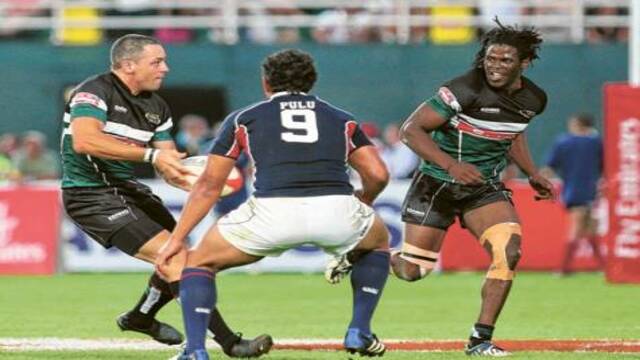Part 2
As part 1 of the article argued, committing defenders with the draw and pass is a low-risk, high-reward play compared to more elaborate attacking strategies. It makes me wonder, therefore, why it is less prevalent in today’s game. Perhaps it is the simple banality which makes it easily eschewed for more ornate strategies. Complex moves and game-plans have their place in rugby, but too often teams aim for the clouds before they master the fundamentals.
The art of an effective draw and pass has become so scarce in top level rugby in recent years that I often find myself applauding a player or team just for executing it correctly. Surveying the multitude of rugby that has graced us in 2013, it is quite surprising the amount of teams, many considered world class, that don’t execute the draw and pass consistently or effectively.
Wales, the Crusaders, Australia, France, and Toulon, teams that have a tendency to be too lateral in attack at time, have all been guilty of the failing this year. Individuals in these teams can still naturally draw and pass, but it is important that the team as a whole can execute the skill.
Game Tape Review:
Let us consider two recent examples – one of a team consistently getting it wrong in a game and the other of a team consistently getting it right.
Exhibit A: Australia in the 2nd test vs the Lions
Australia’s attacking play has become clueless in recent years. It wasn’t so long ago, think late 2010 after their wins over the Springboks and New Zealand in the space of a month, that Australia was being heralded as the most exciting team in world rugby and a genuine threat for the Rugby World Cup. Strangely Australia then decided to constrain its game and started employing arguably ‘less risky’ strategies which resulted in an anaemic attack. From having a number of world class attacking options, Australia became a team with severe limitations.
The 2nd test against the Lions is a damning case in point. Look at all three of the plays highlighted in the video. The common denominator is that these moves are complex and elaborate. They are overly choreographed removing any chance of independent thinking and they ultimately result in negative outcomes (the second play is debatable but is quite an elaborate move for what essentially amounted to a decent ball carry). This video illustrates the importance of the ball carrier identifying when to execute and when to choose a better option. The Aussies just slavishly followed through the planned move. Too often it seemed that Australia passed the ball out of instruction rather than intuition.
It also shows what over-coaching and complicating the basics of rugby can do to very capable attacking players. It renders their natural attacking instincts useless and devolves them into something akin to robots.
Exhibit B: New Zealand in the 2nd round of the Rugby Championship vs Australia
New Zealand’s great run over the last decade (118-18), where they have consistently beaten the rest of the world, has undoubtedly been down, in part, to having a great generation of world class players, but it is also due to them consistently executing the fundamentals of rugby better than anyone else. Think of all the great All Black tries from this era. I would wager that a good 60% of them came from simply executing basic rugby skills and philosophies. The All Blacks are ‘pass masters’ at utilising turn-over ball and employing effective counter-attacking strategies, both of which require the team as a whole to be spatially aware and to be able to draw and pass.
The 2nd round Rugby Championship match against Australia showed why the All Blacks are so effective at attacking. Look at all three plays highlighted in the video, the common denominator is that these are simple moves focussed on basic skills and involving backs and forwards. In fact, all three moves wouldn’t look out of place at a Saturday morning under-12s match – just a group of players executing the fundamentals of rugby.
The clips show how the All Blacks exploit the defender’s body language, knowing when to commit him fully or when to utilise the space offered if he holds off committing. On many occasions the space was only created once the tackle was initiated (see clips two and three). Both backs and forwards showed they were adept at committing the defender to make the tackle and putting the player outside in space. Additionally, knowing when the defender is under-committing (or over-committing to the player outside) and duly exploiting the space on the outside or inside was something the All Blacks did well. You could argue that Conrad Smith failed to do this effectively in the first clip as a number of Australians had over-committed on Julian Savea on the outside – a dummy and cut inside may have resulted in a try for New Zealand. The results speak for themselves. Two tries in three of the moves and the other one resulting in a gain of 35 metres. The All Blacks were able to exploit Australia’s defensive failings and that started with knowing when to draw and pass.
Final thought
Perhaps I am being hyperbolic about the demise of the draw and pass and the preference of professional teams to employ more complex strategies. The All Blacks and the Chiefs are two teams that do the basics extremely well and teams tend to aim to emulate the best in the business. So good things should flow on from the All Blacks domination of the international scene and the back-to-back Super 15 titles of the Chiefs.
Here’s hoping.


